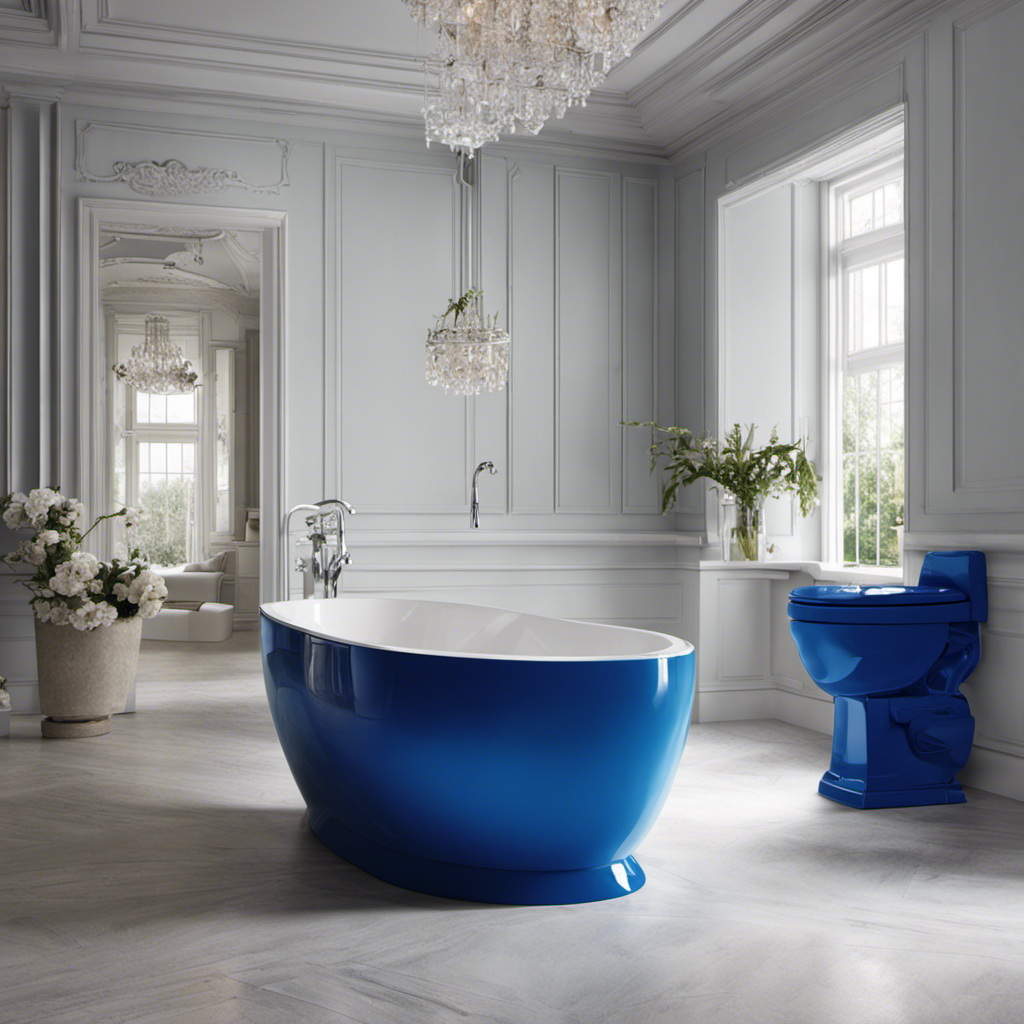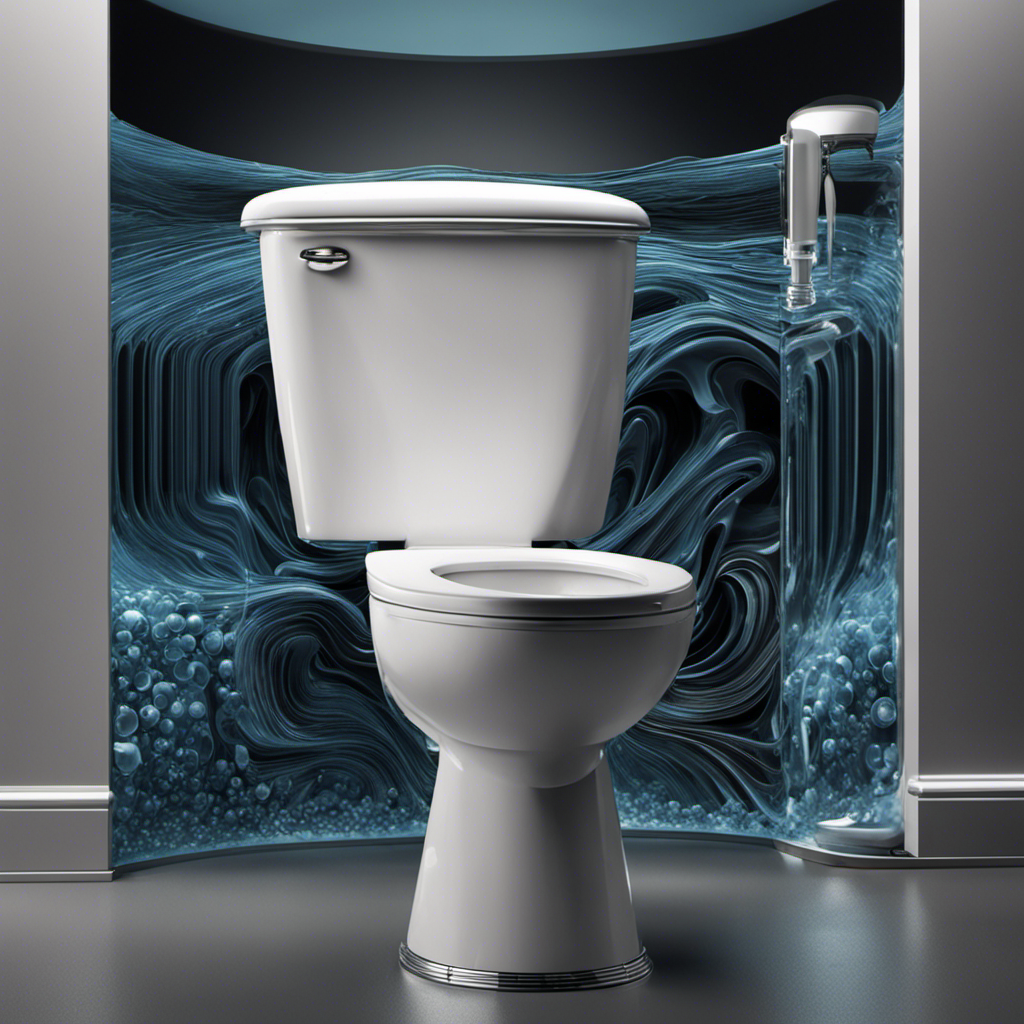So, you might be wondering why on earth your toilet seat has turned blue. Well, let me shed some light on this peculiar phenomenon.
In this article, we’ll explore the possible causes of a blue toilet seat, delve into the chemical reactions at play, and discuss common dyes and stains found in bathrooms.
Additionally, I’ll provide you with prevention and maintenance tips, as well as instructions on how to remove those stubborn blue stains.
Get ready to unravel the mysteries of your mysteriously blue throne.
Key Takeaways
- Blue toilet seats can be caused by the presence of copper pipes in the plumbing system or chemical reactions between copper and water.
- The use of cleaning products with dyes or chemicals can also lead to blue stains.
- Blue stains on toilet seats are generally not associated with health risks.
- Preventive measures and proper maintenance, such as regular cleaning and avoiding harsh cleaning products, can help prevent and remove blue stains from toilet seats.
Possible Causes of a Blue Toilet Seat
There are a few possible reasons why your toilet seat may have turned blue.
One common cause of toilet seat discoloration is the presence of copper pipes in your plumbing system. Over time, the copper can react with certain chemicals in the water, leading to the formation of blue stains.
Another possible cause is the use of certain cleaning products that contain dyes or chemicals that can discolor the toilet seat.
It’s important to note that while blue stains on your toilet seat may be unsightly, they typically do not pose any health risks. However, it’s always a good idea to regularly clean your toilet seat and avoid using harsh chemicals to prevent any potential damage or discoloration.
Understanding the Chemical Reactions
Understanding the chemical reactions can help explain why my toilet seat has turned blue. Chemical reactions occur all around us, even in everyday life. When it comes to color changes, there are specific scientific processes at play. Here’s a breakdown of the science behind color changes:
-
Oxidation reactions:
-
Oxygen molecules react with certain substances, causing them to change color.
-
Rusting of metal is a prime example of oxidation, where iron reacts with oxygen, turning it reddish-brown.
-
pH reactions:
-
Acid-base reactions can also result in color changes.
-
pH indicators, like litmus paper, change color depending on the acidity or alkalinity of a solution.
In the case of my blue toilet seat, a chemical reaction between the cleaning agent and the material of the seat might be responsible. This reaction could lead to the formation of a blue-colored compound, resulting in the change in color. Understanding these chemical reactions helps us unravel the mysteries behind color changes in our everyday lives.
Common Dyes and Stains Found in Bathrooms
To identify common dyes and stains found in bathrooms, you can start by examining the labels of cleaning products. Many cleaning agents contain synthetic dyes that give them their vibrant colors. However, it’s important to be aware of the potential toxicity of these dyes.
Some common bathroom dyes, such as those used in toilet bowl cleaners, can pose health risks if ingested or inhaled. For example, blue stains in bathrooms could be the result of a chemical reaction between certain cleaning products and the minerals present in the water. These stains may contain harmful substances that can be harmful to your health.
Therefore, it is crucial to take preventive measures and practice proper maintenance to avoid any potential risks associated with these dyes and stains.
Now, let’s explore some prevention and maintenance tips for a blue toilet seat.
Prevention and Maintenance Tips for a Blue Toilet Seat
To prevent a blue toilet seat, you should regularly clean your bathroom and avoid using cleaning products that may cause chemical reactions with the minerals in the water.
Here are some maintenance tips to keep your toilet seat looking pristine:
-
Clean your bathroom regularly. Use a mild detergent or toilet cleaner to remove any dirt or stains. Scrub the toilet seat with a soft brush or sponge to prevent discoloration.
-
Avoid using harsh cleaning products. Some cleaning agents contain chemicals that can react with minerals in the water, causing the toilet seat to turn blue. Instead, opt for DIY cleaning solutions, such as vinegar and baking soda, which are gentle yet effective in removing stains.
How to Remove Blue Stains From a Toilet Seat
If you’re dealing with blue stains on your toilet seat, the best way to remove them is by using a mixture of vinegar and baking soda. This DIY cleaning solution is effective in removing stubborn stains and restoring the cleanliness of your toilet seat.
To begin, make a paste by combining equal parts of vinegar and baking soda in a bowl. Apply the paste directly onto the blue stains and let it sit for about 15 minutes. Then, using a scrub brush or sponge, gently scrub the stained area in circular motions.
Rinse the seat thoroughly with water and wipe it dry with a clean cloth. The acidic properties of vinegar and the abrasive nature of baking soda work together to break down and lift the blue stains, leaving your toilet seat clean and stain-free.
Conclusion
In conclusion, a blue toilet seat can be caused by a variety of factors, including chemical reactions, dyes, and stains commonly found in bathrooms. Understanding these causes can help prevent and maintain a blue-free toilet seat.
For example, one case study showed that the use of a particular brand of toilet cleaner containing a blue dye resulted in a blue-tinged toilet seat. By being aware of the products we use and implementing proper cleaning techniques, we can ensure a pristine toilet seat free from unwanted blue stains.










